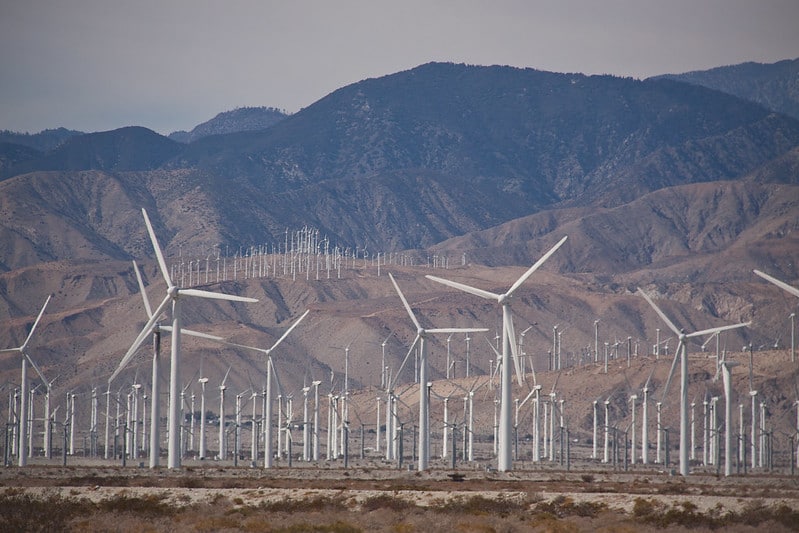On February 23, US President Joe Biden pledged that the US would achieve net-zero emissions by 2050, following a spree of climate-related developments in recent weeks, including rejoining the Paris Agreement after exiting it in 2017 and revoking a permit for the Keystone XL pipeline. The US also plans to release its updated Paris Agreement NDCs by April 22, the day that the US will host a climate leaders summit. As part of our series on reaching net-zero emissions, we are taking a look at the US, analysing its climate goals in an every-warming world, specifically looking at energy production and renewable energy, and other innovative low-carbon technologies.
—
The official announcing the release of the updated NDCs said that areas of policy alignment would include methane in oil and gas operations, transport and vehicles and climate change resilience.
According to a study conducted by Princeton University, the US could reach net-zero emissions of greenhouse gases by 2050 using technology and at costs aligned with historical spending on energy. The university’s report, titled “Net-Zero America,” outlines five technological pathways for the US to decarbonise its economy. The study details the infrastructure that needs to be built and the investments that need to be made. All of the studied pathways were found to involve annual spending on energy within the historic range of what the country spends on energy each year, about 4-6% of GDP.
To do this, the country must start now. According to the World Bank, American per-capita carbon emissions are the highest in the world, with the country emitting 16 metric tons of carbon for every person in 2016.
You might also like: As the Power of Coal Dwindles, Renewables Are Set To Come Out on Top
In the authors’ model, they tested approaches using only renewable energy and others that required more heavily on next-generation nuclear technologies, carbon capture and natural gas, taking them to the five pathways mentioned above. However, to reach this 2050 goal, the authors outline steps that need to be taken before 2030.
These include putting 50 million electric cars on the road and 3 million public charging ports, increasing the use of electric heating systems in homes to 23% form today’s 10%, tripling the use of electric heating on commercial property, quadrupling wind and solar capacity from today’s 150 GW to 600 GW, building high-voltage transmission infrastructure to carry renewable energy over long distances and reducing non-carbon dioxide greenhouse gas output, nitrous oxide and methane by 10%.
The researchers also called for changing forest and agricultural management practices to increase the amount of carbon removed from the atmosphere each year, developing a pipeline network for moving carbon pulled out of the air to underground storage facilities, and investing in developing power technologies like hydrogen combustion power plants.
The authors write, “We find that each net-zero pathway results in a net increase in energy-sector employment and delivers significant reductions in air pollution, leading to public health benefits that begin immediately in the first decade of the transition. The study also concludes that a successful net-zero transition could be accomplished with annual spending on energy that is comparable or lower as a percentage of GDP to what the nation spends annually on energy today.”
Thankfully, the coal industry in the US has been steadily declining. A decade ago, coal was the powerhouse of US electricity generation, accounting for half of the country’s electricity. Over the years, its share has dwindled, down to 24% in 2019. In the same year, coal energy consumption was outpaced by that of renewables, a first in the US in over 130 years. A June 2020 report by the EIA forecasted that renewable electricity generation would grow by 4% this year, while coal generation would be reduced by a quarter. This disparity comes from the leading role of renewable energy in expanding generation capacity, particularly wind and solar, as well as its low operating cost. In the face of the pandemic, industry analysts predict that the transition from coal to renewables is accelerating, and coal’s share may well diminish to a mere 10% in five years.
Between 2011 and 2019, about 121 U.S. coal-fired power plants were reprocessed to burn other forms of fuel,103 of which switched to natural gas, according to the United States Energy Information Administration (EIA).
The US shed 49.2 of its 316.8 gigawatts (GW) of coal-fired power between 2010 and 2019, greatly due to power plant fuel type conversion to natural gas. The drivers of this include tighter emission requirements, low prices and technological progress.
Continuing this transition will be profoundly difficult. According to the authors, “The current power grid took 150 years to build. Now, to get to net-zero emissions by 2050, we have to build that amount of transmission again in the next 15 years and then build that much more again in the 15 years after that. It’s a huge amount of change.”
The researchers said they hope that the report will provide confidence that the US has several genuine pathways for getting to net-zero emissions, and help guide investment and policy priorities over the next few years.
After the previous Trump administration’s efforts to undermine climate science and undo at least a hundred environmental rules, Biden’s science-first ideology will be very important in helping the US to achieve net-zero emissions.
Featured image by: Flickr

















